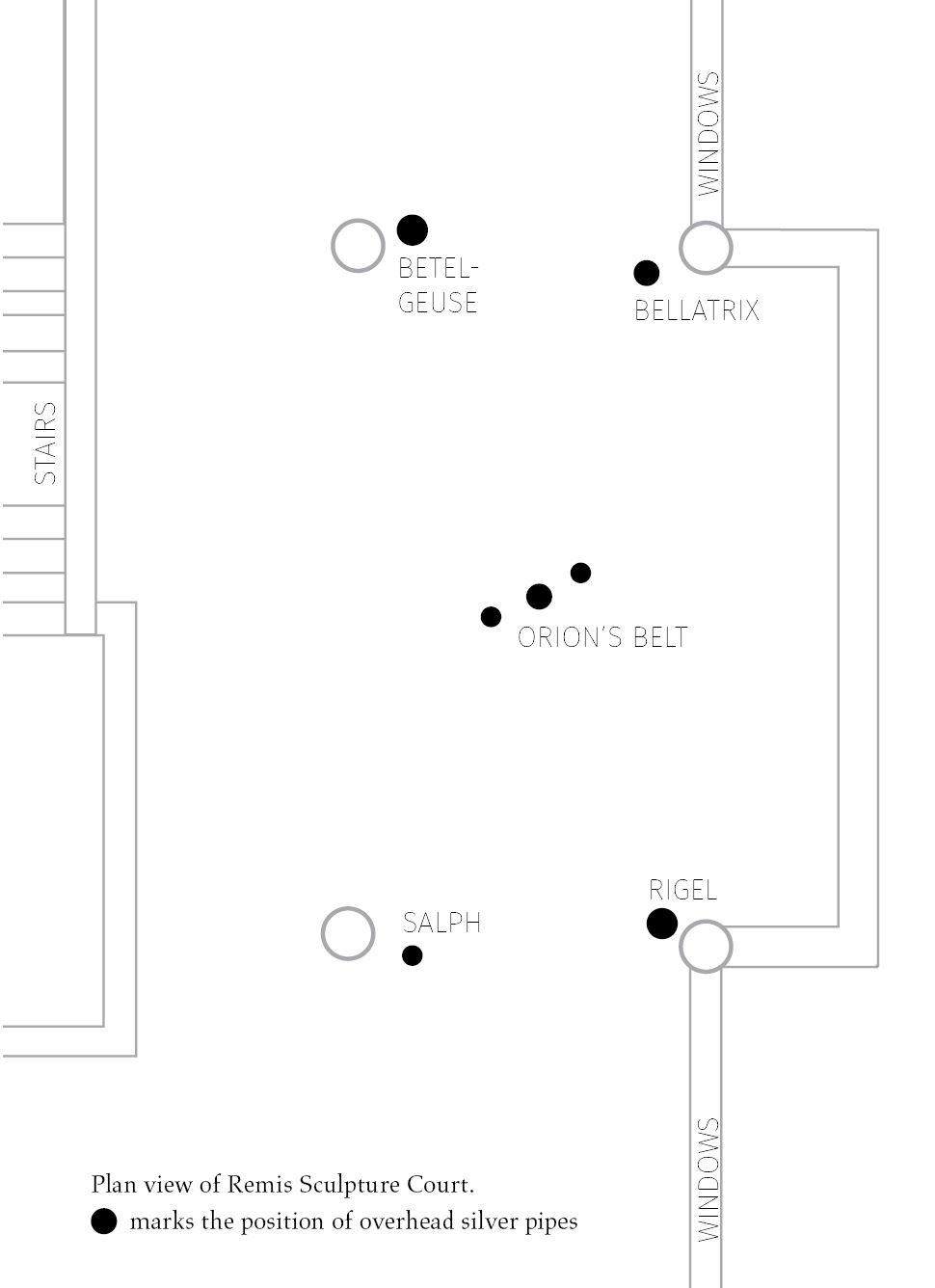TRANSMISSION ART ARCHIVE


Sonic Planetarium: Satellite Pipes
Installed at Tufts University Art Galleries in the Remis Sculpture Court as part of Wave Farm (in residence) 2018-2019, Heidi Neilson's installation is comprised of prints along the Koppelman entrance wall and, beginning in November 2018, sculptural and sound elements suspended from Remis’s beams: "Sonic Planetarium: Satellite Pipes," an audio installation channelling satellites in earth’s orbit, in real time. Sound files representing individual satellites play as the actual objects pass overhead…as if you can hear into space.
The seven silver Satellite Pipes cylinders hang from the atrium ceiling each channel audio representing satellites and other orbiting objects which are within radio transmission range of Tufts University in real time. Each pipe is assigned a category of orbiting object and named after the stars in the constellation Orion. A gallery map and descriptions below detail the source and type of each sound, heard from five of the pipes. As with Sonic Planetarium, the sounds are recordings from radio transmissions from that satellite in the past, or interpretive sounds representing that satellite or object.
Instructions on how to participate by adding your audio to the growing model are here: https://sonicplanetarium.net/participate/.
Satellite Pipes is a site-specific variation of the project Sonic Planetarium, a project made possible, in part, with funds from the New York State Council on the Arts in Partnership with Wave Farm: Media Arts Assistance Fund, a regrant program of the New York State Council on the Arts, Electronic Media and Film Program, with the support of Governor Andrew Cuomo and the New York State Legislature, and is a fiscally sponsored project of the New York Foundation for the Arts.




